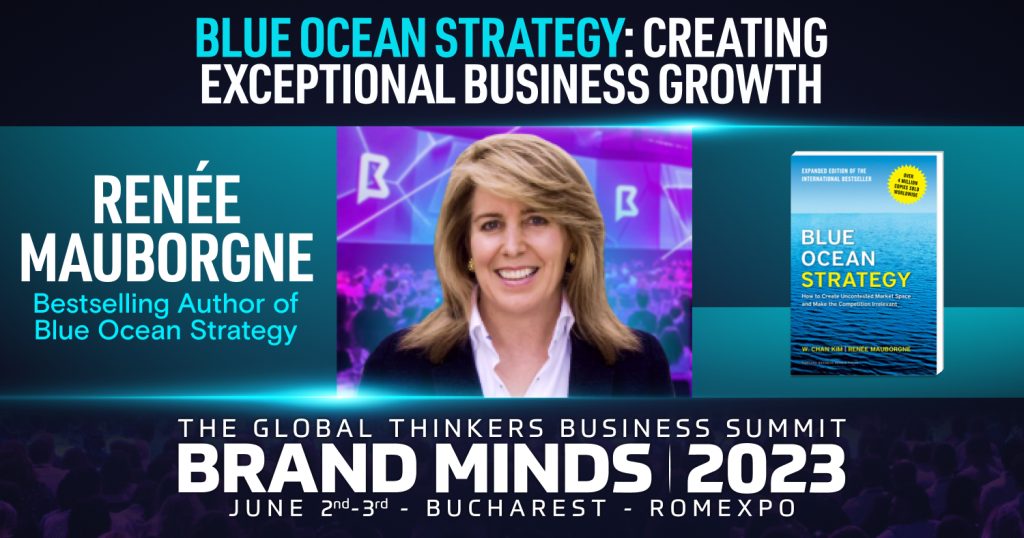18 tactics to close more sales
Looking for tactics to close more sales? Then this article is for you!
18 tactics to close more sales
Sales tactic #1 TALK BENEFITS, NOT FEATURES
Nobody wants to read technical details: how much horsepower, how many inches, how many colours, how many hours etc. Instead, turn those features into benefits for your customer. The smartphone is so slim you can fit it into your shirt pocket. The camera is so powerful you can take a high-resolution photo of Betelgeuse, one of the brightest stars in the night sky. This pair of jeans is so comfortable you can dance the tango in them.
Sales tactic #2 OVERCOME ANY OBJECTIONS YOUR PROSPECTS MIGHT HAVE
Get to know your prospects inside out. Make a comprehensive list of every objection you and your team members have heard from prospects during sales calls and find the right answers to overcome them. They might touch on subjects like price, costs, time to implement your solution, better alternatives and so on. Ask questions to discover the underlying issue. You could start with a price objection (‘It’s too expensive’) and discover, by asking follow-up questions, that a payment instalment plan would solve the objection.
Sales tactic #3 ALWAYS ASK FOR NEXT STEPS
Don’t let the conversation die out; keep talking to the prospect. To this end, never finish your emails with ‘Let me know if you are interested’ or ‘Click here to learn more’. Ask for the next steps. (“Are you free Friday for a quick chat?”).
Sales tactic #4 BECOME AN EXPERT ON PROBLEM-FINDING
For decades, sales professionals focused on providing prospects with the solutions they asked for and striving to show them why their solution was the best. This approach could work in some cases and fail in others. Why? Because prospects are experts in problems, not solutions. Henry Ford: “If I had asked people what they wanted, they would have said faster horses.” Turn from problem-solving to problem-finding. Identify the hidden problems of your customer to help him move forward with the sale.
Sales tactic #5 NURTURE YOUR AMBIVERSION
Ambiversion is a combination of introversion and extroversion. It’s time to get rid of the myth of strong extroverts being better at selling. Sales experts show that the personality type most effective in sales and persuasion is the ambivert. Ambiverts are more effective and better sales professionals because they have the qualities of both introverts and extroverts: they know when to push and when to listen.
Sales tactic #6 MASTER POSITIVE SELF-TALK
Research shows that finding arguments is more powerful and more effective than positive self-affirmations. Shift from positive self-affirmations to positive self-talk by turning it into a question: Can I do this? If so, how?
Sales tactic #7 LIST 1 OR 2 MINOR NEGATIVES
Build credibility and prompt persuasion by listing one or two minor negatives following a list of positives related to your product. This increases transparency and trust. And trust is the stepping stone to closing the sale.
Sales tactic #8 REMOVE FRICTION
If you want your prospect to do something, make it easy, really easy for them to do it. Don’t ask them to go through three pages on the website and five steps before they can see the benefits or the How it works video. Spend less time changing minds and more time making their choices easy to make. Reduce friction by trying to align the easy behaviour with the desired behaviour.
Sales tactic #9 FIND THE RIGHT MOTIVATION
If you know your prospect’s profile by heart, you know the right motivation behind their decision to buy. Position your solution in line with their core motivation. Examples of motivation that you can add to influence people’s behaviour: family, money, status, more time for hobbies or family, career, getting things done faster and easier.
Sales tactic #10 LEVERAGE THE POWER OF WORD-OF-MOUTH
Sales research shows that word-of-mouth has a big impact on behaviour, it generates more than twice the sales of advertising. The goal is not to make a piece of content go viral, it’s to influence one person to tell another person.
Sales tactic #11 ASK ‘WHO DO YOU KNOW THAT I SHOULD KNOW?’
When you realize the conversation with the prospect is not going where it should, end the talk only after asking for a referral with this key question: ‘Who do you know that I should know?’
Sales tactic #12 APPLY SOCIAL CURRENCY CUSTOMER PROFILE-BASED
Social currency refers to the actual and potential resources from presence in social networks and communities, including both digital and offline. What a CEO cares about is different from what a work-from-home parent cares about. So take this into account when drafting your sales pitch.
Sales tactic #13 FIND THE INNER REMARKABILITY
Every product is unique at least in one way or has something surprising, novel or interesting about it. Find the inner remarkability and show it.
Sales tactic #14 USE THE LOSS AVERSION COGNITIVE BIAS
The Loss aversion cognitive bias describes the tendency to prefer avoiding losses to acquiring equivalent gains. Use the loss aversion bias to your advantage by stating what the prospect stands to lose if they don’t make the purchase. It’s powerful and it will surely get the attention of your prospect.
Sales tactic #15 USE THE FRAMING EFFECT COGNITIVE BIAS
The framing effect cognitive bias is when people decide on options based on whether the information is presented from a positive view or a negative view; e.g. as loss or gain. So are prospects attracted to gains if you present them in the correct light? Let’s say you sell enterprise software. Your product is amazingly efficient: it reduces complaints by 95%. How do you showcase this result to gain the prospect’s interest: 95% fewer complaints per month or 95% more satisfied customers per month? As per the framing effect bias, the latter choice is the right one.
Sales tactic #16 USE THE ZERO-RISK COGNITIVE BIAS
Zero-risk bias is a tendency to prefer the complete elimination of one particular risk over options that could eliminate more risks overall. When given the choice between reducing one risk from 5% to 0% or more risks from 55% to 50%, research finds that people go predominantly with the first choice. To benefit from the zero-risk bias approach, present your prospect with two choices. In the first choice, show how your product eliminates one of the prospect’s problems entirely while in the second choice, your product solves a number of your prospect’s pain points by a considerable margin.
Sales tactic #17 BE A FACILITATOR
Become the focal point and hub for connecting others with good contacts and information. When people are looking for something and you happen to know how to connect them with the source of what they’re looking for, you will become a valuable resource to them. There’s no mistake that those people that are able to connect other people with other people not only make great brokers but are also great salespeople.
Sales tactic #18 COLLECT TESTIMONIALS
A good testimonial can prove to be one of the most powerful sales tools you can use. Get them by talking to existing customers and asking them how things are going. When they give you some good information, ask if you can use it for a testimonial. Remember that a good testimonial is a before-and-after description.
Do you want to master your sales game?
Join The Ultimate Sales Strategy MasterCourse™ with Craig Wortmann, Founder & Academic Director Kellogg Sales Institute and CEO Sales Engine!
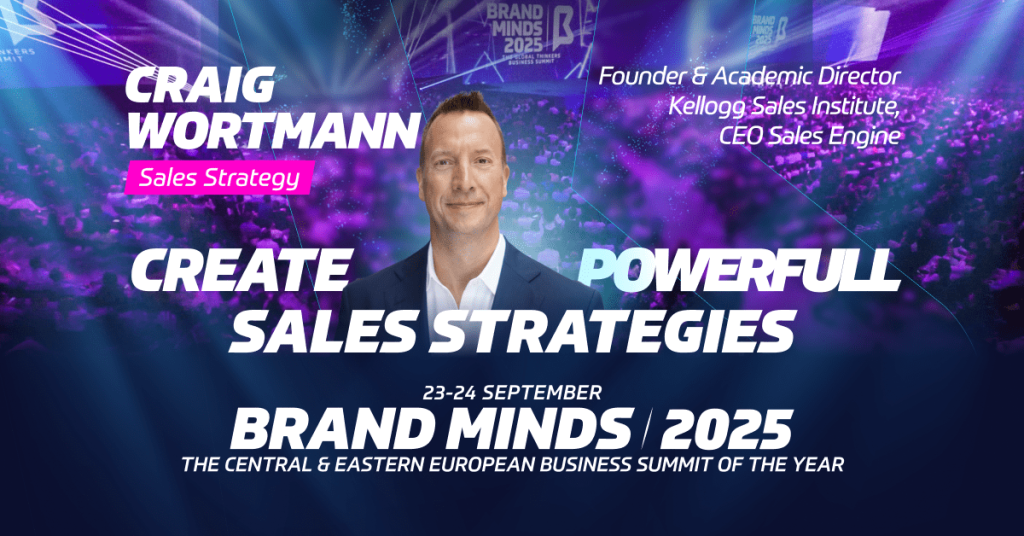
13 business models to generate revenue
How businesses can generate revenue has changed a lot over the last decade. Choose the most appropriate business model for your company from these 13 business models updated for 2021.
1. Control and be rewarded from your own data business model
In exchange for convenience and a personalized experience, brands have been telling consumers to give away their personal data and relinquish any control over it.
We now know how brands used their consumers’ data and the damage they have caused.
Also, selling users’ personal data to third parties has been a huge source of revenue for these companies.
According to the latest PwC report, times are changing.
Consumers are demanding both a better, data-enabled experience and more flexibility and control over how their information is used.
In addition to this, consumers are starting to ask themselves: why should only companies profit from selling their data? They should take a piece of the pie as well.
Gener8 Ads is a web browser offering exactly that: it lets users control and earn from their data whilst browsing the web.
Gener8 Ads works with companies in the capacity of a media owner to do three things:
1. Provide premium media for them to reach a highly defined audience.
2. Use their proprietary first-party data to unveil actionable insights about their customers, eg. their purchase habits.
3. To promote their brands and drive action from their audience.
How does Gener8 Ads generate revenue?
Gener8 Ads gives 80% of the revenue back to the user and takes a 20% cut.
Users download the Gener8 Ads browser and choose to keep their data private or earn points any time their data is used. They can redeem these points for products, vouchers or donations to charity.
Watch Sam Jones, the company’s founder pitch Gener8 Ads on Dragon’s Den:
2. Empowering creators business model
What is the creator economy?
The creator economy has been growing exponentially in the past few years. It is estimated that more than 50 million people worldwide consider themselves to be creators.
Mighty Networks defines the creator economy as an economy built around highly motivated, creative, and skilled individuals that have started their own brand, business, or community utilizing a digital platform to share their work.
Not coincidentally, Mighty Networks is one of the platforms contributing to the creator economy. It is a community-focused platform that helps users build their businesses.
Mighty Networks offers users three plans they can choose from: the free plan, the business plan ($81/month) and the community plan ($23/month).
This is how users can drive business revenue depending on their chosen pricing plan:
- Charge for access to their membership site or group
- Charge for access to their online courses
- Becoming a Mighty Affiliate
3. Shopstreaming business model
Shopstreaming is the combination of live streaming, entertainment and shopping.
China is leading the shopstreaming market with 67 billion dollars in global sales for 2019 and an estimated 149 billion dollars for 2020.
If these stats show anything is that consumers want to buy from influencers during shopstreaming sessions.
It’s a business opportunity that saw various developers create digital platforms intended to transform the way to stream live events.
Livescale is one such developer. The company’s shopstreaming platform, LivescaleTV enables businesses to reach, engage, and monetize their audience, as well as understand the behaviours and interactions of their users.
L’Oréal Canada was the latest brand to use Livescale TV when they hosted a three-day shopping streaming festival.
Results:
- over 50% of product purchases from new customers,
- 300% higher conversion rate than the company’s website,
- 40% audience engagement.
4. Blockchain-as-a-service business model
According to recent reports, the global blockchain-as-a-service market size is expected to grow at an impressive compound annual growth rate of 62.73% to $52.5 billion by 2026.
Blockchain as a Service (BaaS) is a type of blockchain service offering that allows business customers to use cloud-based solutions to develop, host and adopt their own blockchain applications, smart contracts and other relevant functions on the blockchain.
The main drivers of the global Blockchain-as-a-Service market are:
- increasing awareness of the benefits provided by blockchain technology;
- need for security in transactions.
The top leaders operating in the Blockchain-as-a-Service (BaaS) market: Oracle, Microsoft, Accenture, Alibaba, IBM and Huawei.
5. Subscription business model
The subscription business model is a business model in which customers pay a recurring price at regular intervals for access to a product or a service.
The first companies to adopt the subscription business model were the news publishers whose readers paid a monthly fee to have newspapers and other magazines delivered to their door.
In more recent times, companies providing digital tools and platforms like Canva, Monday or Grammarly generate recurring revenue based on the subscription business model.
Other companies didn’t start as subscription-based businesses but recognized an unmet need for their products to be delivered on a monthly basis.
Customers opt for products to be delivered on a monthly basis because it’s convenient and saves them precious time.
Here are some examples of products delivered in subscription boxes; some also provide customization:
- Dog food subscription boxes (PetPlate, Jinx, Crafted Kibble)
- Beauty care and makeup subscription boxes (GlossyBox, BoxyCharm, Birchbox)
- Meal subscription boxes (Pasta Evangelists, Raw Generation, Hello Fresh)
6. Freemium business model
Freemium is a business model in which a company offers basic features to users at no cost and charges a premium for supplemental or advanced features.
It’s an appealing strategy for both companies and customers. Free is a powerful word in marketing because of its ability to instantly grab a customer’s attention. If basic free features are valuable to them, customers are more likely to pay for advanced or additional features.
When used correctly, the freemium business model can drive massive user adoption.
Dropbox, Zoom and Spotify are great examples of the freemium business model.
Dropbox has an annual revenue of $1.91 billion, Zoom – $2.6 billion and Spotify, $9.34 billion.
7. Dropshipping business model
The dropshipping business model is used in retail where the seller purchases the product from a third party (manufacturer or wholesaler) and has it shipped directly to the customer. The seller doesn’t hold the products in stock.
The main benefits of the dropshipping business model:
- Low investment
- Easy to start
- Perfect for beginner entrepreneurs
- Flexibility
- Remote work
- Easy to scale
- Wide selection of products
Among the top eCommerce platforms for dropshipping businesses are Amazon, Shopify, WooCommerce and Magento.
8. Drop-servicing business model
Drop servicing is a business model where your company sells other people’s services online.
Your company doesn’t perform the service, a third-party company performs the service.
9. Commission-based business model
The commission-based business model is a revenue model where a user is charged a fee for each transaction. The platform may charge either the seller or the buyer.
Examples of commission-based businesses: PayPal, Uber, Airbnb, Etsy, eBay.
10. Hidden revenue business model
If the service is free, you are the product, goes a very famous saying.
What it means is the service is not actually free. As the user, you pay for it, not with money, but with your personal data.
It’s the business model of digital giants like Google, Facebook, Instagram, Pinterest etc which collect users’ data and sell it to businesses for advertising purposes.
In 2020, Google generated almost $147 billion in revenue from the company’s ads business. Facebook generated close to $84.2 billion in ad revenues.
11. Razor and blade business model
The razor and blades business model is a business model in which one item is sold at a low price in order to increase sales of a complementary good, such as consumable supplies.
The best examples of companies generating revenues with this type of business model are suppliers of razors and blades (Gillette), printers and ink cartridges (Xerox), coffee makers and coffee pods/capsules (Nespresso), 3D printers and printing materials, game consoles and games.
12. Reverse razor and blade business model
The reverse razor and blade business model is a type of business model where the main product is sold at a premium price and the consumable, at a lower price.
Apple is the standard example of the reverse razor and blade business model. The main product, the iPhone, is sold at a premium price. Once the customer owns an iPhone, they have access to low-priced features like music on iTunes, movies or Mac OS and iWork free of charge.
13. Affiliate marketing business model
The affiliate marketing business model is a revenue model in which a company compensates third-party publishers to generate traffic or leads to the company’s products and services.
The publishers are paid in commission for every sale they make.
How does it work?
The affiliate shows a link for the product they are selling on their website or social media, customers click on the link which sends them to the store. If they purchase the product, the affiliate is paid a commission.
Two of the top-earning affiliate marketing platforms are Amazon Associates and Shopify Affiliate Program.
Join the Conversation
We’d love to hear what you have to say.
Get in touch with us on our LinkedIn Page, Facebook Page, Twitter or TikTok.
4 takeaways from Martin Lindstrom’s Live Talk
Yesterday, BRAND MINDS hosted Live Talk with world-famous brand expert Martin Lindstrom to mark the launch of his latest book on organizational culture, The Ministry of Common Sense. This was the first time Martin has spoken about his new book to the public in Romania and we are stoked he chose the BRAND MINDS community.
Of the many valuable insights and recommendations that Martin shared yesterday, I chose four that I believe are more relevant to the current situation.
4 main takeaways shared by Martin Lindstrom during the live talk
1. See the world from your customer’s point of view.
The first rule of writing anything, from mini-copy to long-form content is to ask someone else for feedback.
The person creating the respective piece of content, the author, cannot give feedback. It takes a new pair of eyes to spot tiny mistakes or any other errors that the author just cannot see.
It’s the same with your product. You may believe that your product caters to the needs of your customers perfectly. Or that the buying journey your organization provides is a pleasant experience.
Unless you put yourself in your customer’s shoes, you don’t know that for sure. And once you see the world from your customer’s point of view, you might be in for a big surprise.
You might discover a number of frictions in your purchasing process that you were unaware of.
Here is an excellent example that attracted a lot of attention last year: how many clicks does it take to create a bank account?
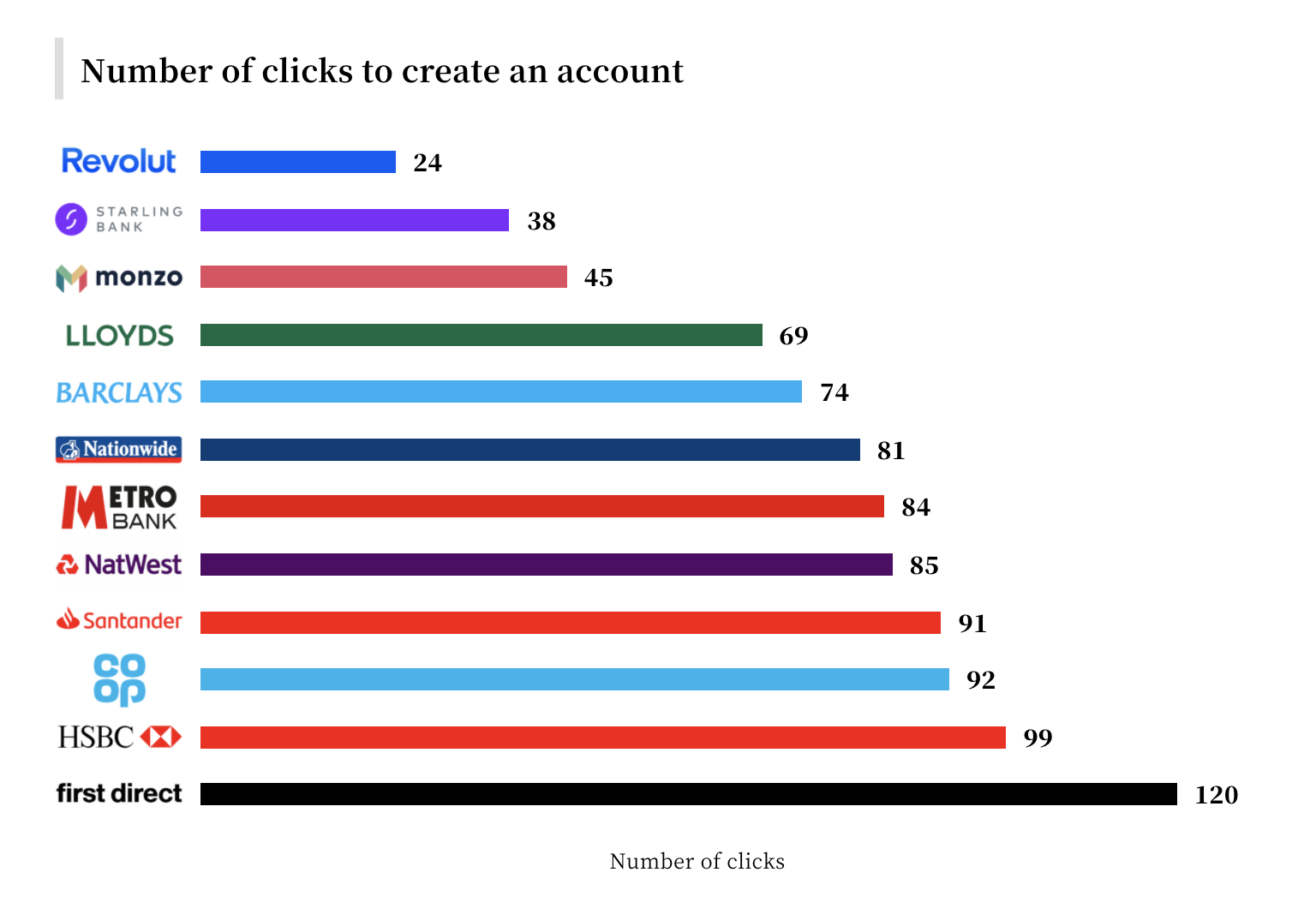
The author of this report opened a bank account at twelve different banks.
Time is a scarce resource. It’s the only resource we cannot make more of. Your customers feel the same too.
Looking at this report, which bank is seeing the world through its customer’s eyes in your opinion? Which bank provides the customer with the highest rate of friction regarding a basic operation like opening a bank account?
I’m certain that First Direct didn’t set out to establish such a time-consuming experience for their customers (120 clicks!). The experience they offer is correct and necessary from their point of view, not their customer’s.
Remember: you are not your customer.
As Martin pointed out yesterday, companies are seeing the world from inside out instead of outside in. We need to see things as they are and do things as they should be. Let’s treat our customers as they should be treated. That means showing empathy. When we show empathy, the happiness levels of our customers increase by 10%.
Empathy is what every person in business will be talking about in the comping years.
Martin Lindstrom
2. Your customer decides what is common sense.
When companies are just starting out, they are based on common sense and empathy.
As companies grow bigger, they shift from common sense to nonsense. A new layer of bureaucracy is added to the mix.
The number of rules increases and operations that were once easy to get done are now getting harder and harder to do. The organization is getting itself ever deeper into a paralyzing situation.
That’s why Jeff Bezos has been ending every one of his letters to shareholders with this phrase: It remains Day 1. Because a Day 1 type of company is nimble and agile while a Day 2 company is a giant that is slow at making decisions.
The organizational culture at Amazon is focused on delighting the customers. You cannot delight your customers if you don’t know what they want or expect from you.
How do you decide what is common sense for your organization?
It’s not up to you to decide.
Your customer will tell you what is common sense. What your organization needs to do is stay close to its customers and allow them to tell you what is common sense.
3. Measure productivity by how happy your customers are.
Since the pandemic changed our routines, more and more people are working from home.
Some organizations have reported an increase in productivity levels with voices saying the 9 to 5 workplace is dead.
Other reports draw attention to the mental health situation of the employees working from home who are experiencing fatigue, exhaustion or burnout.
In today’s world, how do you measure productivity?
Martin suggests a different approach to measuring productivity. Instead of how many Zoom calls we have participated in, let’s measure how happy our customers are.
Let’s measure the levels of employee satisfaction. Or how easy/difficult it is for colleagues to work with us.
We need to get back to making really valuable contributions like strategic thinking and creativity. We need to figure out how to measure creativity through a screen.
Ultimately, what organizations need to do is change their culture. You will never have a better time to redesign your company than now.
If you go through a crisis like this and you haven’t fundamentally changed your business, you didn’t get the message. This is the moment to change your business.
Martin Lindstrom
4. Find frictions in your organization and address them in 90 days.
What is friction in business? Friction is anything that prevents or dissuades customers from buying your products or services.
Take the number of clicks to open a bank account example above. Do customers have the time or patience to open a bank account after clicking 100 times? I know I would give up a few clicks into the whole process.
Now think of your organization. Is there a process that could be completed in fewer steps? Would customers benefit from a shorter purchasing process? Would the company website provide customers with a more pleasant experience if the UX was cleaner and simpler?
The more complex the organization, the more opportunities for frictions to appear.
Martin recommends we make a list of every friction point in our organization and address them one by one in 90 days. We need to remove one nonsense at a time.
If you didn’t join the Live Talk yesterday, you can watch the replay.
Join the Conversation
We’d love to hear what you have to say.
Get in touch with us on our LinkedIn Page, Facebook Page, Twitter or TikTok.
Jeff Bezos: 8 business lessons from his letters to shareholders
According to recent industry figures, Amazon is the leading eCommerce retailer in the United States with 38,7% share of retail eCommerce sales (source).
Here are the latest Amazon statistics:
- $280.5 billion in net sales
- $11.59 billion in net income
- The most popular product categories: Electronics
- Number of paying Amazon Prime members worldwide: 150 million
- Share of US Amazon customers who are Amazon Prime members: 65%
- Unique monthly US visitors to Amazon sites: 208 million
- Share of direct traffic to Amazon.com: 56.47%
- US Amazon Prime Day conversion rate: 13.5%
- Average annual spending of Amazon Prime members: $1,400
- The most important reason for US shoppers to shop on Amazon: fast, free shipping
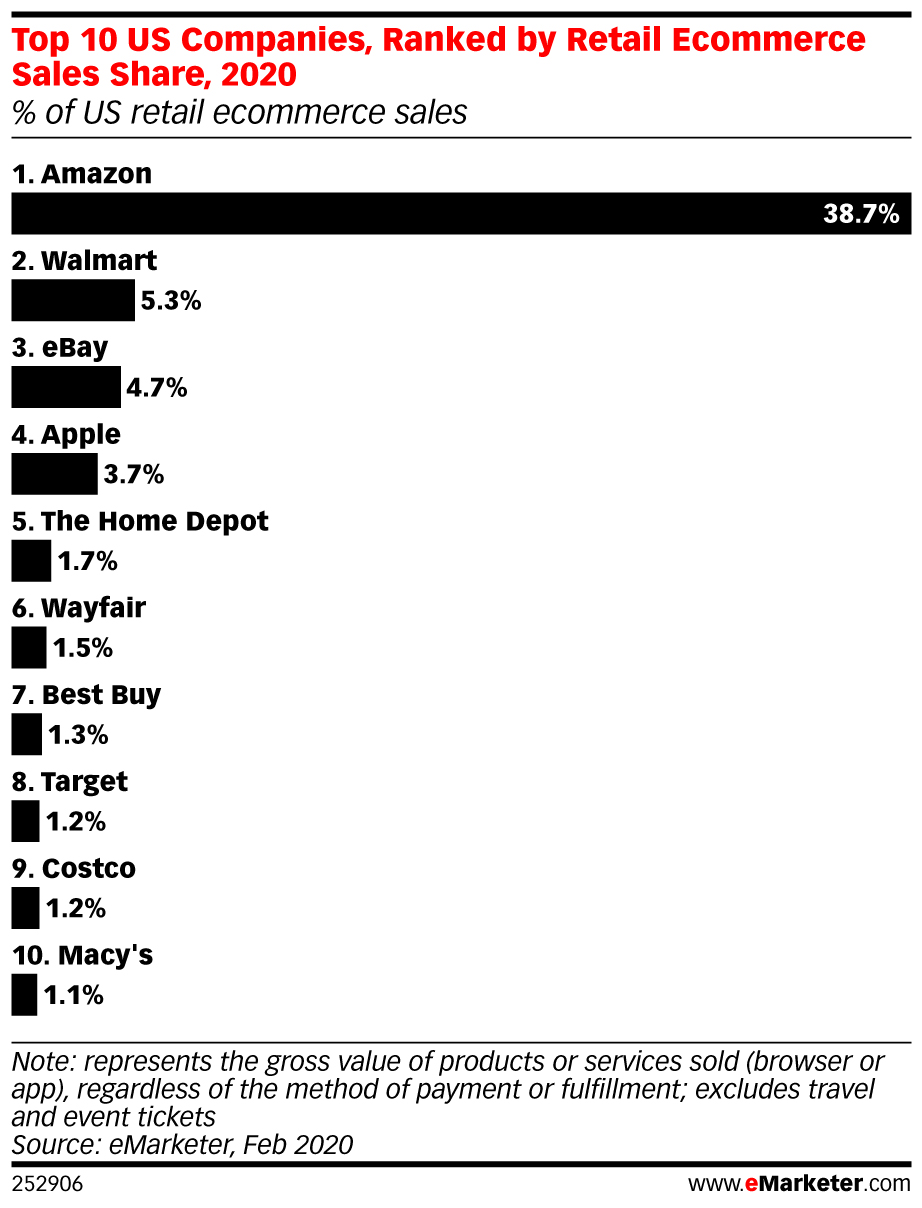
Amazon is #1 in the U.S. Let’s zoom out and take a global approach.
Is the giant retailer maintaining its top place when compared to other eCommerce retailers?
As you can see below, the answer is yes.
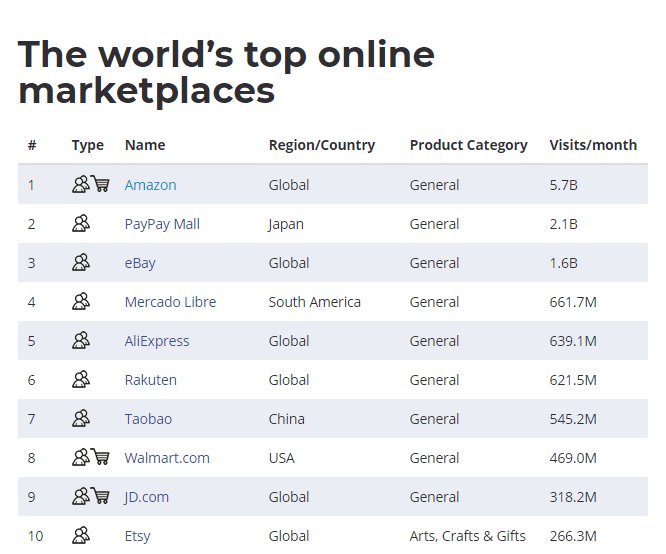
image source: webretailer.com
Amazon.com receives twice the monthly number of visitors as #2, the Japanese retailer PayPay Mall.
If the eCommerce retail industry were a marathon, Amazon would be the front runner, leading the other runners and winning by a landslide.
What makes Amazon so successful and powerful?
What drives this marathon runner to push harder year after year?
How is Jeff Bezos coaching the Amazon collective?
For the purpose of this article, I have analysed Jeff Bezos’ annual letters to shareholders from 2016, 2017, 2018 and 2019. As any Jeff Bezos fan knows, each of his letters ends with a copy of his famous 1997 letter so I have included it in my analysis.
Jeff Bezos: 8 business lessons from his annual letters to shareholders
1. Move quickly to solidify and extend your current position
At the end of 1997, in just three years since starting the company, Amazon.com’ revenue had increased by 838%, selling to more than 1.5 million customers while extending its market leadership in an increasingly aggressive competitive environment (source).
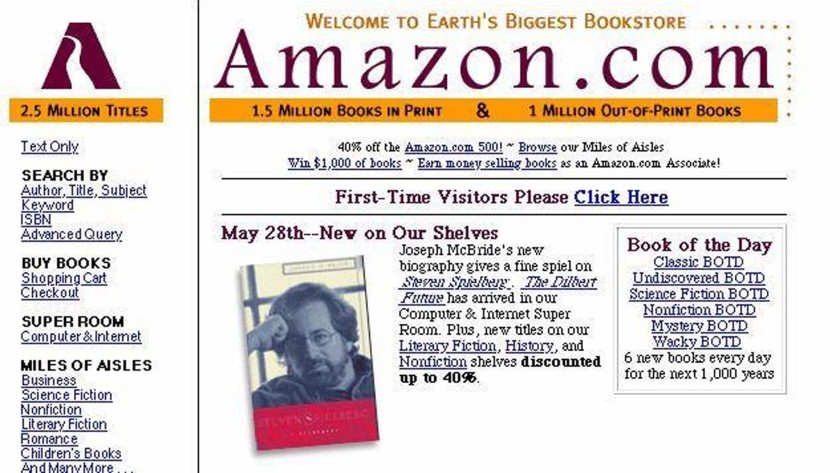
image source: latimes.com
1997 is the year Amazon filed to go public and was preparing to compete with big tech companies AOL and Microsoft which had announced their intention to derive a substantial portion of their revenues from online commerce.
I remind you that Amazon was still selling books at that time.
But that didn’t discourage Bezos who had a strong belief in the online opportunity as expressed in his 1997 letter:
We have a window of opportunity as larger players marshal the resources to pursue the online opportunity and as customers, new to purchasing online, are receptive to forming new relationships. The competitive landscape has continued to evolve at a fast pace. Many large players have moved online with credible offerings and have devoted substantial energy and resources to building awareness, traffic, and sales. Our goal is to move quickly to solidify and extend our current position while we begin to pursue the online commerce opportunities in other areas. We see substantial opportunity in the large markets we are targeting.
2. Set out to delight your customers
After reading Jeff’s letters, if I were to choose only one factor responsible for Amazon’s success it would be his focus on customers.
Complaining customers are a company’s most valuable resource for growth. They reveal blind spots that employees or managers could not otherwise identify giving the business the opportunity to improve and develop.
In his 2016 letter, Jeff says “customers are always beautifully, wonderfully dissatisfied, even when they report being happy and business is great.” In his 2018 letter, he defines them as “divinely discontent”.
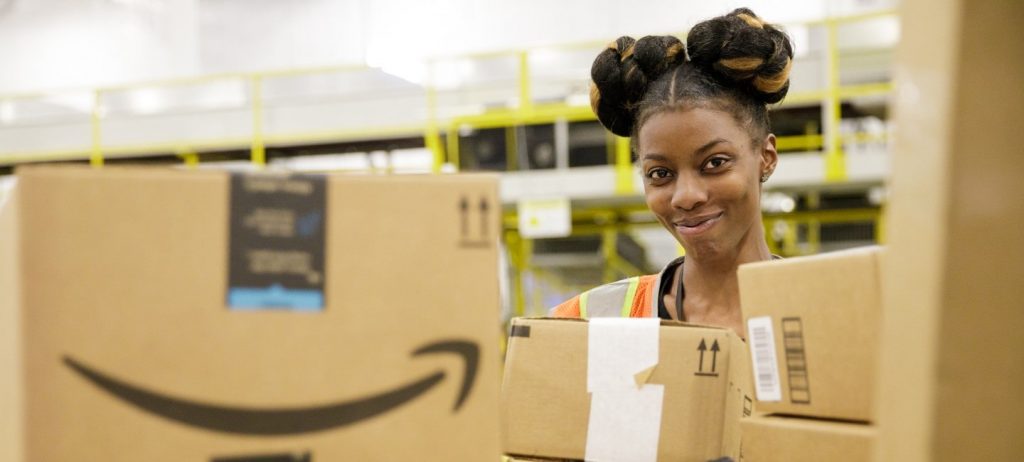
image source: blog.aboutamazon.com
Achieving the goal of delighting customers means developing a powerful system built on true customer obsession.
So here’s the Amazon customer-focused trifecta:
- Listen to your customers and use this data to offer them something they simply could not get any other way
- Improving the shopping experience never ends so pursue it with tenacity and persistence
- Invent on behalf of your customers. Your customers will always want something better and it’s up to you to figure out what exactly it is they expect because, and here’s your challenge, they don’t know what to ask for.
We must invent on their behalf. We have to tap into our own inner imagination about what’s possible.
Jeff Bezos
That’s how AWS, one of Amazon’s most successful services came to be. No customer specifically asked for it and yet that’s what they needed. In 2019, AWS generated $10.2 billion in net sales, up 33% from last year.
Remarkable customer experience starts with heart, intuition, curiosity, play, guts, taste. You won’t find any of it in a survey.
Jeff Bezos
3. Make bold investment decisions
In his 1997 letter, Jeff talks about investments and the criteria underlining his investment decisions.
At the heart of Amazon’s investments is the customer. Every investment that Amazon makes is to further improve customer satisfaction and experience by developing systems, infrastructure and service.
Is the investment going to help the company come closer to its goal of achieving market leadership? Is the investment going to support the company achieve its long-term business objectives? If the answer is yes, then the investment gets the green light.
Always measure the effectiveness of your investments. Establish a set of KPIs to measure the results of your investments, discard the ones that don’t perform as expected and double down on the investments that work. Learn from both your failures and your successes.
If you see a sufficient probability of gaining market leadership advantages, go for it and be bold. There’s no need to start small, go bold!
4. Become aware of proxies
What is a proxy? Proxy is something or someone who acts as a substitute. In his 2016 letter, Jeff talks about the danger of allowing proxies to gain power within the company.
Have you ever heard someone say when referring to a bad outcome Well, we followed the process? That is when the process has become more important than the result and replaced it. It’s the process as a substitute for the outcome.
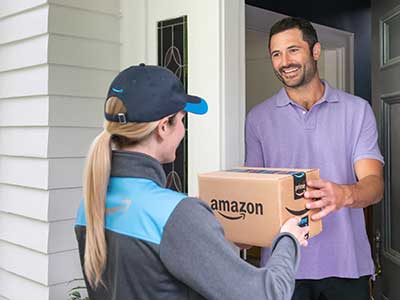
image source: amazon.com
This is a dangerous place for a company and could contribute to its downfall. Jeff’s advice is to become aware of any proxies influencing your business outcomes and eliminate them. Don’t allow market research and customer surveys to become proxies for your customers.
Good inventors and designers deeply understand their customer. They spend tremendous energy developing that intuition. They study and understand many anecdotes rather than only the averages you’ll find on surveys. They live with the design.
Jeff Bezos
5. Your employees must think like an owner
Jeff acknowledged early on that hiring the right people was paramount if Amazon was to be successful and achieve its objectives. “Setting the bar high in our approach to hiring has been, and will continue to be, the single most important element of Amazon.com’s success.”
Amazonians are committed to the company’s core values and goals. They are passionate about working to build something important, something that matters to their customers, something that they can all tell their grandchildren about. Jeff and his hiring team focus on attracting and retaining versatile and talented employees.
“When I interview people I tell them, You can work long, hard, or smart, but at Amazon.com you can’t choose two out of three”, Jeff said in his 1997 letter.
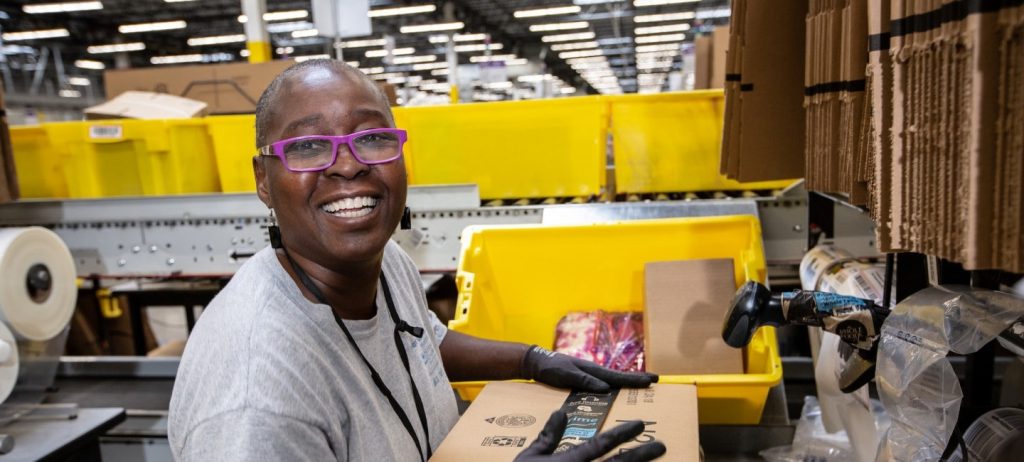
image source: amazon.com
How is Amazon motivating its valuable employees?
The company provides them with two options to choose from: receive compensation in Amazon stock or cash. The retailer would rather compensate its employees in Amazon stock than cash because becoming stockholders changes their mindset. Jeff expects employees to think and act like an owner. To achieve this, employees must actually be owners.
How do you support your employees to take ownership of their work? Do you believe employees thinking and acting like owners makes a difference in the quality of their work?
6. Embrace external trends
Today the business environment is shaped by a wide variety of external factors ranging from technology, online and digital to cultural shifts, changes in customer behaviour etc. Businesses that have adapted to these trends and transformed, as a result, survived. Businesses that have resisted change, didn’t.
Jeff talks about external trends and why businesses should embrace them in his 2016 letter. His advice to every company founder is to acknowledge powerful external trends and embrace them quickly.
Depending on the size of your organization, achieving this could be easy or difficult. It’s somewhat easier for a startup to embrace trends than for a large organization. That’s why it’s imperative for large companies to become agile.
When talking about external trends, Jeff is referring to machine learning and AI.
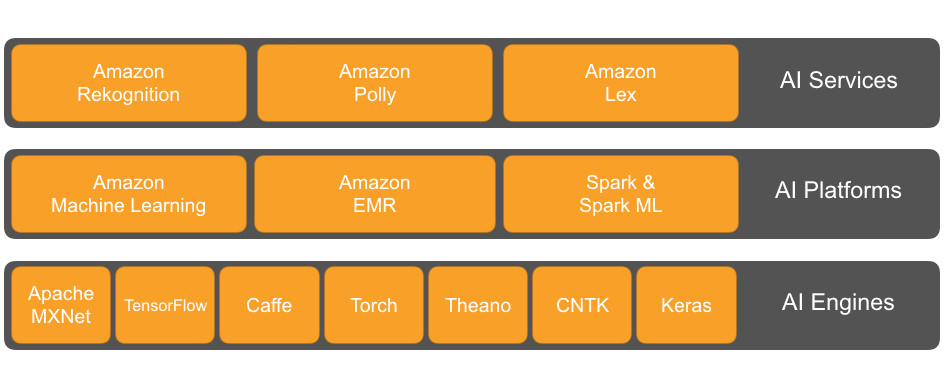
image source: aws.amazon.com
Amazon.com has been working on developing its own machine learning-powered recommendation algorithm since the late 1990s.
In 2003, the development team at Amazon published a paper describing a new recommendation algorithm. The recommendation algorithm they created was called the item-to-item collaborative filter and allowed the online store to radically change for each customer based on their interests.
A 2013 McKinsey article reported that Amazon’s machine learning engine was responsible for 35% of its online sales. I’m sure this number is higher today.
Jeff points out that machine learning drives Amazon’s algorithms for demand forecasting, product search ranking, product and deals recommendations, merchandising placements, fraud detection, translations.
But much of the impact of machine learning is less visible but equally important. Machine learning and AI have a prominent role in the company’s future.
7. Make high-quality decisions fast
Amazon is leading the global eCommerce landscape falling back on 26 years of experience in the industry. It’s one of the big five tech companies, FAAMG—Facebook, Amazon, Apple, Microsoft, and Google and the largest employer among them, with 840,000 employees.
Large organizations have many things going for them (attracting talent, high-value wages, global development, technology advancements etc) with one downside: they are slow at making decisions.
Jeff calls these established large organizations Day 2 companies. Day 1 companies are startups, nimble and agile, bursting with vitality. Day 2 companies are already heading for the end.
Day 2 is stasis. Followed by irrelevance. Followed by excruciating, painful decline. Followed by death. And that is why it is always Day 1.
Jeff Bezos
Twenty-six-year-old Amazon is technically a Day 2 company but with a Day 1 mindset. It’s what allows the giant retailer to keep the energy and dynamism of a lean startup while being #1 in the global eCommerce industry.
How do you make high-quality decisions fast?
Jeff gives the following pointers in this regard:
- Never use a one-size-fits-all decision-making process;
- Make decisions with around 70% of the information you wish you had. If you wait for 90%, in most cases, you’re probably being slow;
- Be good at quickly recognizing and correcting bad decisions. Being wrong may be less costly than you think, whereas being slow is going to be expensive for sure;
- Recognize true misalignment issues early and escalate them immediately;
- Use the phrase “disagree and commit”. If you have a conviction on a particular direction even though there’s no consensus, ask everyone else to gamble with you on it and you’ll probably get a quick yes.
Choose to have the scope and capabilities of a large company and the spirit and heart of a small one.
Jeff Bezos
8. Implement high standards
Staying ahead of the ever-rising customer expectations is one of Amazon’s objectives.
The giant retailer’s obsession with customer satisfaction has led to a number of product innovations (Alexa, AWS) and excellent customer experience (Amazon Go, the no checkout lines physical store, Prime Air, Amazon’s 30-minute delivery service via drones, one-click purchases).
What does it take to achieve such results?
A high-standard mindset.
Here’s what Jeff says about implementing high standards in your company:
- Expose your people to high standards. High standards are teachable and contagious;
- Articulate a few core principles of high standards which helps accelerate the rate of learning;
- Teach high standards in every arena of interest. High standards are domain-specific;
- Recognize the standard and have realistic expectations on scope. To achieve high standards yourself or as part of a team, you need to form and proactively communicate realistic beliefs about how hard something is going to be.
What are the benefits of high standards?
Building better products and services for customers, recruiting and retaining talent and teaching employees how to be professional starting with doing the most invisible work.
People have a voracious appetite for a better way, and yesterday’s ‘wow’ quickly becomes today’s ‘ordinary’.
Jeff Bezos
Join the Conversation
We’d love to hear what you have to say.
Get in touch with us on our LinkedIn Group, Facebook Group or Twitter.
The rise of prosumers is the latest challenge for marketers
On this page:
- Definition of the prosumer
- The reasons consumers turn into prosumers
- Prosumers – an opportunity for marketers
- How could marketers facilitate prosumption
- 4 steps marketers should take to make the most of prosumption
- Conclusion
As a marketer, it’s your job to know everything there is to know about the people consuming the products for which you are creating marketing campaigns, brand activations and advertising.
They are the consumers.
But who are the prosumers?
Prosumers – definition
Prosumers are the people who produce some of the goods and services entering their own consumption.
The prosumer is not a new concept. In his book, ‘The Third Wave’, futurist and businessman Alvin Toffler predicted the decline of consumers and the rise of prosumers, people who produce many of their own goods and services.
Next year will mark forty years since Toffler published his book in 1980 which means enough time will have passed allowing us to see if his prediction was correct.
Marketing guru Philip Kotler recognized the importance of prosumers for brands and marketers and in 1986 he published an essay in Advances in Consumer Research Volume 13 – ‘The Prosumer Movement: a new challenge for marketers’. In his essay, Kottler builds upon Toffler’s concept of prosumers from a marketing perspective.
Two reasons for consumers becoming prosumers
Instead of purchasing products and services from the market, prosumers can be found making their own clothes, cooking their own food, rearing their own cars and hanging their own wallpaper, says Kotler.
Why do people become prosumers?
Why would they rather produce their own soap than buy one of the many choices the market has to offer?
Kotler identified two reasons: better quality and self-actualization.
Prosumption activities for better quality products/services
Mass production is the manufacture of large quantities of standardized products often using assembly lines or automation technology.
To produce the products, manufacturers are always looking for ways to drive costs down sometimes at the expense of their workers, environment and overall quality of the product.
A lot more care goes into a product prosumers build or produce themselves, from the quality of the materials used to the finishing look. These prosumers care about what goes into the food they eat, the clothes they wear or the detergents they use to wash their children’s clothes.
Hollywood actress and mother of three, Jennifer Garner became increasingly concerned with the quality of food she was feeding her babies.
She began making her own organic, cold-pressed baby food blends. Her blends are free from preservatives, colours, concentrates or added sugars. Just like the food she used to eat when she was a little girl, living on her parents’ farm.
Her company, Once Upon a Farm is a member of the Organic Trade Association and a Certified B Corporation which means the company meets the highest standards of overall social and environmental performance, transparency and accountability.
Read more: 3 successful businesses founded by Hollywood stars
People would favour “make” decisions over “buy” decisions.
Philip Kotler, The Prosumer Movement: a new challenge for marketers
Prosumption activities to achieve self-actualization
Self-actualization means the full realization of one’s creative, intellectual, or social potential.
The concept has been popularized by Maslow in his hierarchy of needs pyramid where self-actualization is the ultimate life goal. Maslow defined self-actualization as follows: “What a man can be, he must be.”
How is prosumption tied to self-actualization?
To answer this question, we must first know what self-actualization is for each person.
Is it becoming a painter? Or taking care of children? Empowering people of all ages to change their lives by acquiring a new set of skills?
Whatever it is, self-actualization is different for everyone.

Agricool co-founders Guillaume and Gonzague / agriculture.gov.fr
French startup Agricool has reinvented the way strawberries are grown and potentially agriculture as an industry.
Co-founders Guillaume and Gonzague came up with the cooltainer, where fruits and vegetables grow vertically.
The cooltainer doesn’t harm the environment, is cost-effective and 100% sustainable. Agricool also created the cooltivator, a new kind of urban farmer. The cooltivator uses the cooltainer to grow their own greens, essentially having a garden in their apartment.
Prosumers – an opportunity for marketers
In his book, Alvin Toffler said prosumerism will usher in the end of marketing.
Philip Kotler has a more positive perspective. Although the increase in prosumption activities means fewer customers for mass-produced goods and services and less consumer interest in brands, he believes marketers should view prosumerism as a challenge and an opportunity for creativity.
Kotler says as follows: “Instead of marketers fighting prosumers, they should look for opportunities to facilitate prosumption activities.”
How could marketers facilitate prosumption:
1. Create better tools. Create better tools for prosumers to use, including better electric power tools for carpentry work, better tools for farming small plots of land, and so on. Agricool is a great example of empowering urban farmers to grow their own food.
2. Simplify the product on the process. “Painting by number” kits allow “Sunday painters” to produce better-looking paintings. “Adhesive wallpaper” allows more people to hang their own wallpaper.
3. Create how-to content. People looking to produce products need to acquire new skills. Think of ways to help them achieve their goals. It could be by providing them with the opportunity to attend evening classes. Or publishing how-to-do content in various formats: text, video or audio.
4 steps marketers should take to make the most of prosumption according to Philip Kotler
- Identify the most popular prosumer activities;
- Think through appropriate product and service responses;
- Direct your promotion appeals to themes stressing individuation, skill-building, and productiveness;
- Develop more specialized messages to reach these highly segmented target markets.
Conclusion
Alvin Toffler’s prediction of the rising prosumers was correct.
Philip Kotler’s prediction of marketers creating messages for highly segmented customers was correct.
He was also accurate when thirty-four years ago he envisioned the increase of how-to content. Today how-to videos are in top four content categories watched by YouTube users next to comedy, music and entertainment/culture.
Creating highly personalized messages is one of Facebook’s recommendations to advertisers looking to increase ad conversions. Being relevant to your customer’s needs is the secret to advertising success.
Relevancy is the word for email marketing also. Email provider MailChimp found that segmented email campaigns perform better than non-segmented campaigns.
One more marketing insight Kotler was right about: people searching for “others with kindred interests, finding them and communicating with them through electronic media”. In the late nineties, people joined discussion forums. When our lives came under the influence of social media, people created Facebook Groups to share information, support and help each other achieve their dreams.
As Philip Kotler says in his essay, prosumers should be looked at as another market segment.
The marketer’s role is to creatively support prosumers achieve their goals.
The aim of marketers should not be to protect the exchange system. The purpose of exchange networks is to facilitate the pursuit of human satisfaction. If the market system is overextended, and if people want to meet more of their own needs, on what grounds should marketers object? The market, after all, is a human invention and it will last as long as it serves human needs.
Philip Kotler
Join the Conversation
We’d love to hear what you have to say.
Get in touch with us on our LinkedIn Group, Facebook Group or Twitter.
What is a Customer Experience (CX) Marketer?
Table of contents
- Definition of a CX (customer experience) Marketer
- What does a CX Marketer do?
- CX Marketers make data-driven marketing decisions
What is a Customer Experience (CX) Marketer?
A Customer Experience Marketer is a new kind of marketer, part creative and part data scientist says John Cosley, Director, Global Brand and Digital Marketing at Microsoft/Bing.
Customer Experience is the result of every interaction (touchpoint) a customer has with your business, online and offline, at any stage in their buyer journey.
[bctt tweet=”A customer experience marketer is part creative and part data scientist #cxmarketer #customerexperience” username=”brand_minds”]
Why is customer experience vital to your business?
In this day and age, when digital has levelled the field for any business, customer experience is a competitive differentiator.
How a customer feels about your business is critical for customer growth, retention and advocacy. Long story short – your customer’s experience with your brand could potentially make or break your business.
HubSpot CEO Brian Halligan announced last year that his company replaced the traditional sales and marketing funnel with a new model, the Customer Flywheel. He believes the secret to building a great company is to provide a customer experience 10x lighter than the competition.
Positive customer experience can lead to turning your customers into brand ambassadors thus bringing in new customers & revenue which keeps the flywheel spinning.
Learn more: Goodbye, Marketing Funnel! Hello, Customer Flywheel!
In its 2019 Global Consumer Insights Survey, PricewaterhouseCoopers recommends brands and businesses to include another metric in addition to the traditional ROI – ROX or the Return on Experience. ROX is the metric with which marketers measure the purchase experience of their consumers.
Learn more: ROX is the new ROI
What is the job of the Customer Experience Marketer’s job? What does he/she do?
The customer experience marketer’s job is to create a better experience for the customer at every touchpoint, online or offline, no matter the stage they’re at in the buying journey.
Here are some of the points your customer is interacting with and for which the customer marketer is expected to create a positive experience:
- First contact – What is the customer’s first contact with our brand? How do we want the customer to feel while interacting with our brand for the first time?
- Social media – What does the customer see on our social media? How does our social content make them feel and think? Are these reactions exactly what we want to achieve as a brand?
- In-store – How do our customers feel like in our stores? What do they smell? It’s not a coincidence that the first thing customers smell when they come into any Lidl store is the amazing aroma of delicious pastry. This is a carefully designed customer experience!
- App/Website – Are our customers interacting easily with our app or website? What’s their experience with our digital platforms? Do they get what they want on our app/website with reduced friction and increased speed?
Data is key to unlocking smarter customer journeys.
John Cosley, Director, Global Brand and Digital Marketing at Microsoft/Bing
To create successful experiences that market to the customer journey, the CX marketer has to go through this 3-step process:
- Collect, unify, and analyze 1st-party data;
- Augment their first-party data and close the gaps with 3rd-party data;
- Understand the customer journey and create a holistic view of the customer based on insights provided by data.
CX Marketers make data-driven marketing decisions
In July of 2019, Microsoft Advertising conducted research with marketers and agencies to gather insights on how marketers use data to engage with customers.
The report is called Creating smarter customer journeys: A blueprint for the successful application of data and Artificial Intelligence in improving the customer experience.
It shows that successful CX marketers have adopted a data-driven approach which allowed them to:
- Have a better understanding of the customer decision journey (CDJ);
- Make more informed decisions based on that understanding;
- Improve customer engagement as a result;
- Improve marketing strategy as a whole.
Sources of 1st and 3rd party data according to the Microsoft Advertising report
The following sources provide 1st party data:
- Organic search data
- Site analytics
- Site visitor behaviour
- Customer-relationship management (CRM)
- Call centre data
- Ad serving data
Applications of 1st party data:
- Dynamic personalized creative
- Custom BI reporting
- Journey mapping
- CRM
- email/DR marketing
- Site personalization
The following sources provide 3rd party data:
- 3rd party data providers
- Location data companies
- Market research data (eMarketer, Gartner, Nielsen, HBR, Trendwatching etc)
- Targeting segments from ad partners
- DMP data marketplace (e.g. Oracle, Adobe)
Applications of 3rd party data:
- Customer/segment targeting
- Customer behavioural insights
- Multi-dimension campaign segmentation
- Campaign planning and forecasting
CX marketers who leverage the collected data, reach an in-depth understanding of their customers and their customer decision journey usually see a +45% incremental lift in ROI/ROAS for a typical campaign.
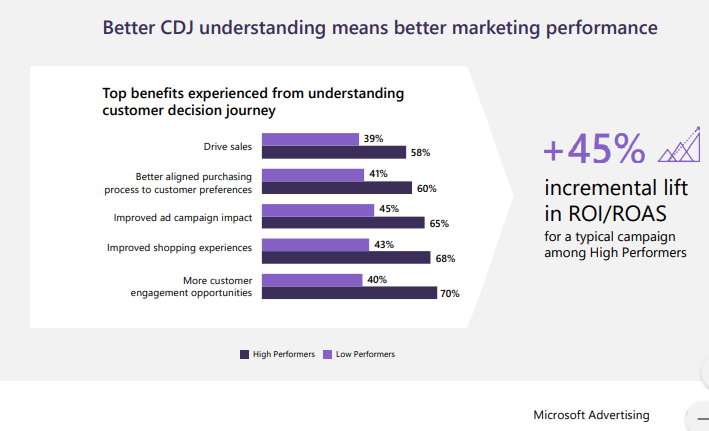
Source: Microsoft Advertising
Here are other results and benefits:
- More opportunities for customers to engage with brands
- Campaigns that better speak to customer needs
- Improved ad campaign impact
- Improved shopping experiences
- Better aligned purchasing processes to customer preferences
- Offers aligned to customer personas
- Personalized future customer decision journeys
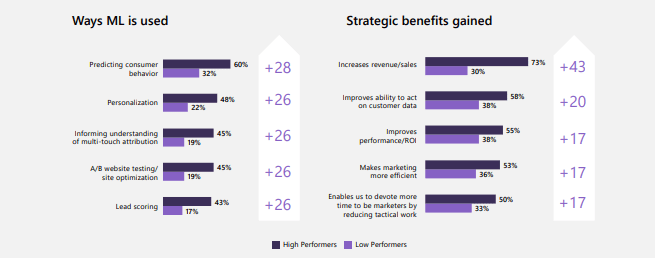
Source: Microsoft Advertising
Machine Learning (ML) is another great tool that CX Marketers can leverage to anticipate consumer behaviour and create smarter, more personalized advertising experiences.
Is a CX marketer part of your marketing team?
Join the Conversation
We’d love to hear what you have to say.
Get in touch with us on Facebook Group and Twitter.
6 Factors Influencing Customers’ Buying Decisions (1)
Influencing customers’ buying decisions is what marketing is all about. Knowing what makes your customers tick and what factors weigh in on their decisions to buy is the Holy Grail of all marketers.
If you want to learn more about what factors influence your customers’ buying decisions, this article is for you.
Are you looking to reach more customers?
Join BRAND MINDS 2023 and learn how to generate more revenue using digital marketing from Digital Marketing Expert Neil Patel.
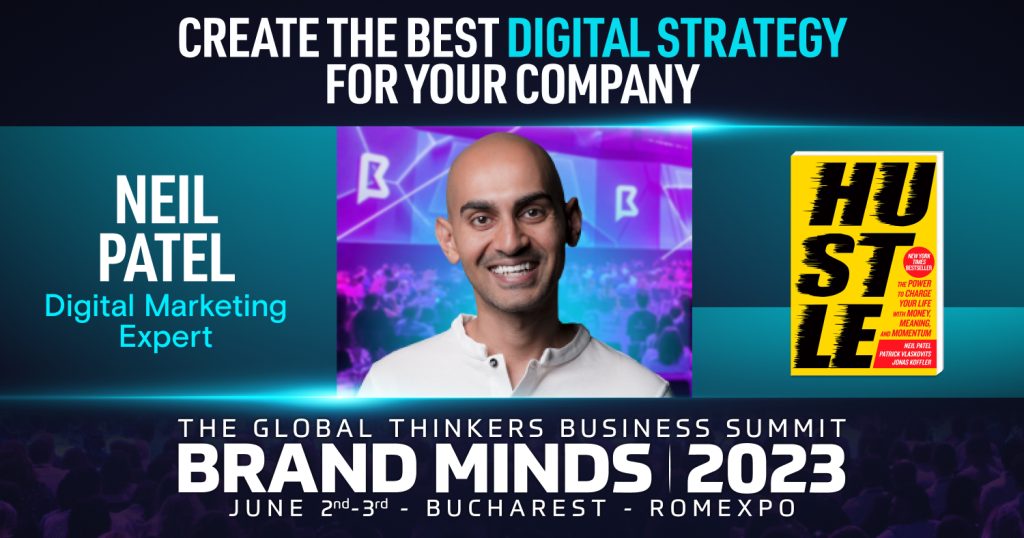
6 factors that influence your customers’ buying decisions
1. Reviews
In 2017 Spiegel Research Center conducted research with the purpose of finding how reviews have transformed the way consumers make purchase decisions – How online reviews influence sales.
The research found that 95% of shoppers read online reviews before making a purchase which makes reviews a powerful form of consumer engagement.
They also found that reviews influenced customers’ buying decisions depending on the following factors: the price of the product, degree of uncertainty or risk involved in the purchase, average star rating, presence of negative reviews, and the number of reviews.
Reviews influence customers’ behaviour as follows:
![]() Displaying reviews can increase conversion
Displaying reviews can increase conversion
The purchase likelihood for a product with five reviews is 270% greater than the purchase likelihood of a product with no reviews
![]() Reviews impact sales more for higher-priced items and for higher-consideration items
Reviews impact sales more for higher-priced items and for higher-consideration items
When the price is higher, there is more risk involved in the consumer’s decision. Having more information via reviews helps mitigate that risk;
![]() Negative reviews establish credibility with 82% of shoppers specifically seeking them out;
Negative reviews establish credibility with 82% of shoppers specifically seeking them out;
![]() Initial reviews have the greatest impact
Initial reviews have the greatest impact
Nearly all of the increase in purchase likelihood occurs within the first 10 reviews, and the first five reviews drive the bulk of this increase. Higher-priced items need at least five reviews to see the greatest conversion impact, whereas lower-priced items only need 2-4 reviews to see a significant impact.
![]() Purchase likelihood increases by 15% when consumers are exposed to reviews written by a verified buyer vs. an anonymous review.
Purchase likelihood increases by 15% when consumers are exposed to reviews written by a verified buyer vs. an anonymous review.
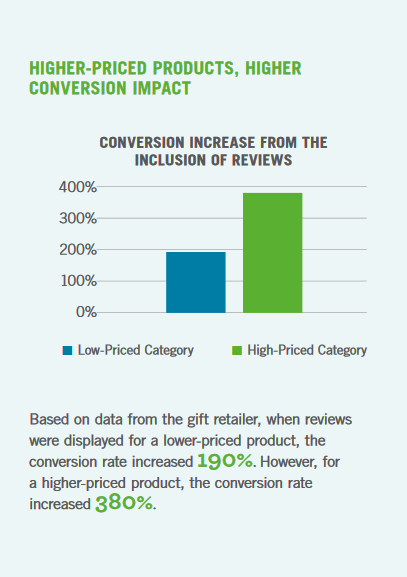
source: How online reviews influence sales
2. Brand familiarity
If you are a search marketer you are striving every day to keep your brand visible on the Google Search Results Page. I’m sure you are familiar with the following saying: The best place to hide a dead body is page 2 of Google. That’s another way of saying that you need to have your brand or company appear on the first page because no one has the time nor the patience to go further to page two or three.
Additional reading: Learn how to rank 1st in Google search results.
The Secret Life of Search is a study based on eye-tracking over 400 search journeys across more than 40 search terms. This study set out to discover how consumer search behaviour has been evolving in recent years and offers a series of interesting and surprising insights.
The first insight is that brand familiarity won more clicks on Google.
![]() 82% of respondents opted for a brand they were familiar with as their first choice, across a wide range of sectors.
82% of respondents opted for a brand they were familiar with as their first choice, across a wide range of sectors.
![]() 47% of these respondents explained their options by being past or present customers of the respective brand.
47% of these respondents explained their options by being past or present customers of the respective brand.
![]() An overwhelming majority of first choices, especially for younger searchers, are driven by ‘off-page’ factors – familiarity with the brand through experience or advertising.
An overwhelming majority of first choices, especially for younger searchers, are driven by ‘off-page’ factors – familiarity with the brand through experience or advertising.
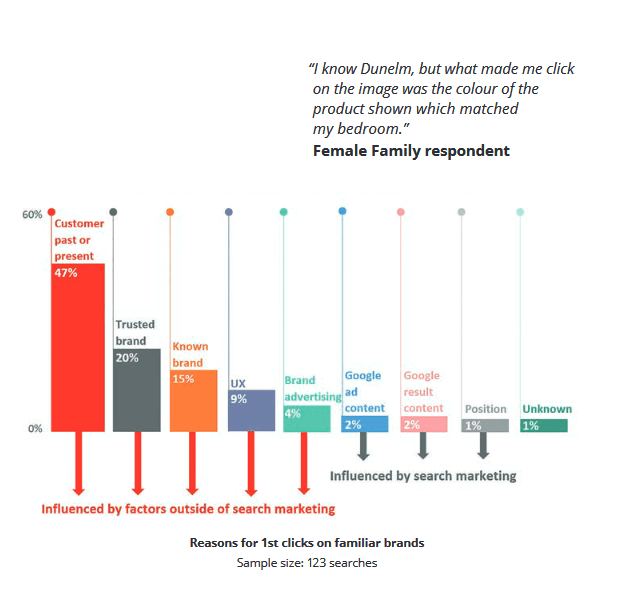
source: Secret Life of Search
3. Customers’ emotional state of mind
What is the customers’ emotional state of mind when they go shopping?
Various reports found that retail therapy – shopping used as a form to relieve stress – is real and is practised by a large percentage of customers.
Here is the stress-shopping behaviour broken down by age:
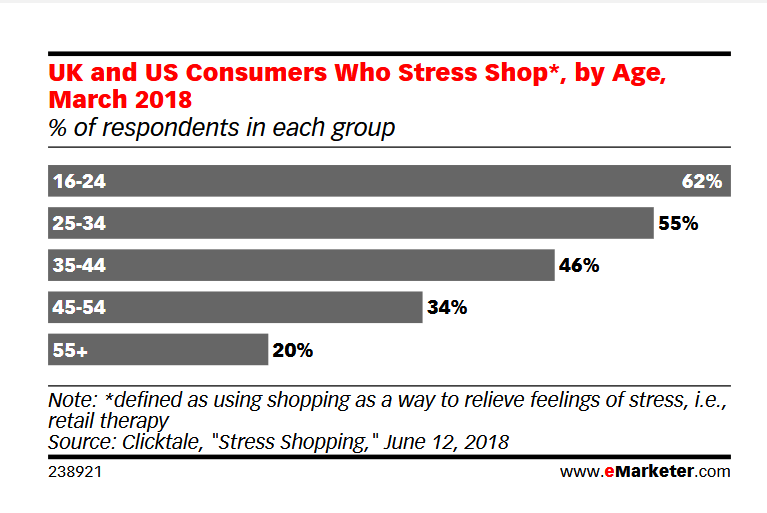
Frustration impacts the customer’s buying decision negatively.
The following stress factors are driving customers away from your website or shop and into the arms of your competition:
![]() Poor customer service online and offline;
Poor customer service online and offline;
![]() In-store shopping was considered more stressful than online;
In-store shopping was considered more stressful than online;
![]() In online shopping the biggest frustration is caused by too many ads (53%);
In online shopping the biggest frustration is caused by too many ads (53%);
![]() Re-entering information during checkout;
Re-entering information during checkout;
![]() Transactions that took too long (22%);
Transactions that took too long (22%);
![]() eCommerce sites that loaded too slowly (81%).
eCommerce sites that loaded too slowly (81%).
Here are the factors that place your customers in a better state of mind thus contributing to increased sales:
![]() A fast-loading site (94%);
A fast-loading site (94%);
![]() Quality of the website experience (61%);
Quality of the website experience (61%);
![]() Quality of the physical store experience (52%).
Quality of the physical store experience (52%).
Additional reading: 6 factors influencing customers’ buying decisions (part 2).
Join the Conversation
We’d love to hear what you have to say.
Get in touch with us on our LinkedIn Group, Facebook Group or Twitter.
5 smart ways to turn website visitors into customers + 1 hot news from Google
Your website is your house. You need to keep it clean, updated with modern appliances, working sanitary fittings and beautiful interior design.
But you didn’t build your website to just sit pretty and look nice. You are working hard to attract traffic in great numbers to your website so you expect it to convert your visitors into customers.
This article will show you 5 smart and creative ways to turn your website visitors into customers plus 1 piece of hot news from Google you will love.
Also we have a bonus for you at the end of the article.
Let’s begin with Google’s latest hot news for website owners and developers!
1. AUGMENTED REALITY FOR WEBSITE PAGES
If you ever played Pokémon Go or used any of Snapchat’s filters you are familiar with Augmented Reality.
Various companies already use Augmented Reality to increase brand engagement and ultimately sales.
Ray-Ban, one of the major players in the optical industry allows its customers to try the full range of sunglasses virtually on their face without visiting their showroom. Their AR-based app is called Virtual Mirror.
Beauty U is an AR-based app launched by Cover Girl, a cosmetics company. The app scans your face using your smartphone’s front camera and applies appropriate cosmetics virtually. This way the app helps you decide which cosmetic products best suit you.
And the list can go on. What is the common thread in these examples? The AR application live outside their company’s website: they are app-based. So you need to build your AR experience with the help of a third-party developer, which can be costly and time-consuming. And then convince your prospects to go to your app and download it. This may require additional advertising costs.
Wouldn’t it be more convenient for your prospects and your company if your AR application was hosted by your own website?
Yes, it would! Up until recently this wasn’t possible.
But Google is working to change that. In June 2018, Google announced the introduction of AR for the web with its WebXR Device API for Chrome Canary. We are not going to go into technical details but you can watch the demo here:
Yes, it’s not something you can go ahead and implement right away, but you can start working on it now and be the first in your industry to delight your website visitors with on-site AR experiences. Remember: the early bird gets the worm!
Now that this is out of the way, let’s talk about other smart ways to turn your website visitors into customers which you can implement right away.
2. CONVERSATIONAL BOTS
Start talking to your visitors while they are on-site
In 2018, marketing is going back to its roots: getting your message across with conversation. Conversational marketing is defined as a one-to-one approach to marketing that companies use to shorten their sales cycle, learn about their customers and create a more human buying experience.
What tools do you need to implement conversational marketing?
Intelligent chatbots!
You can place your chatbots on various pages of your website: high-intent pages, high-traffic pages, pages with negative intent or any other pages that are relevant of your visitor’s buying journey.
Learn more about conversational marketing and how to use conversational bots here:
How to gain more leads with conversational marketing.
Here are three chatbots and the results they yielded for their companies (info via techemergence.com):
- Concierge, the chatbot of Expensify has increased five times the company’s free trials;
- aLVin, the chatbot of LV, a UK-based provider of financial products and services has reduced the volume of calls from broker partners by 91%;
- Mya, the chatbot of FirstJob, an online-based recruiting firm, improved recruiter efficiency by 38% and increased candidate engagement by 150%.
3. CTAs WITH CONTEXTUAL COPY
All CTAs are not created equal
Depending on your industry or niche, your website can have many pages with different products, services or information. Your visitors may land on your pages looking for various information. Then why would you place the same CTA on all your website pages? You wouldn’t want to sound like a parrot going over and over again Polly wants a cracker would you?
Customise your CTAs with contextual copy. Take your time to write well-crafted CTAs that draw visitors’ attention by answering their needs. You know why your visitors landed on a particular webpage so you can take them to the next step on your sales funnel with smart CTAs, which offer a solution to their problems.
How to write effective copy for your CTAs via uberflip.com:
- Make it about your audience, not you;
- Make it emotional;
- Tell them what they lose-it’s psychological: people hate to lose!;
- Make it catchy, smart of funny.
Take your time and write great copy for your CTAs. Test them to see what works and what doesn’t. All your effort will be worth it because great CTAs can increase your conversion rates. Hubspot’s personalized CTAs performed 202% better than untargeted CTAs. Now that’s what I call a great success!
4. USE VALUE LANGUAGE
Tell them what they gain
Let’s say your company is running a webinar and you need to build the event’s landing page. What do you write on the event’s landing page to convert visitors into registrants?
Here are 4 best practices:
- The headline must convey a benefit to the visitor;
- Stay away from benefits that are too broad, be specific on how your webinar can solve your visitor’s problem;
- Tell people what they will learn in the webinar: use bullets to explain key insights that registrants will gain from joining the webinar;
- Tell people what they win and also what they stand to lose if they don’t register to your webinar. Why? Because you are leveraging the loss aversion, a notion supported by behavioural science. This notion states that people are more motivated to avoid losses than they are to acquire gains.
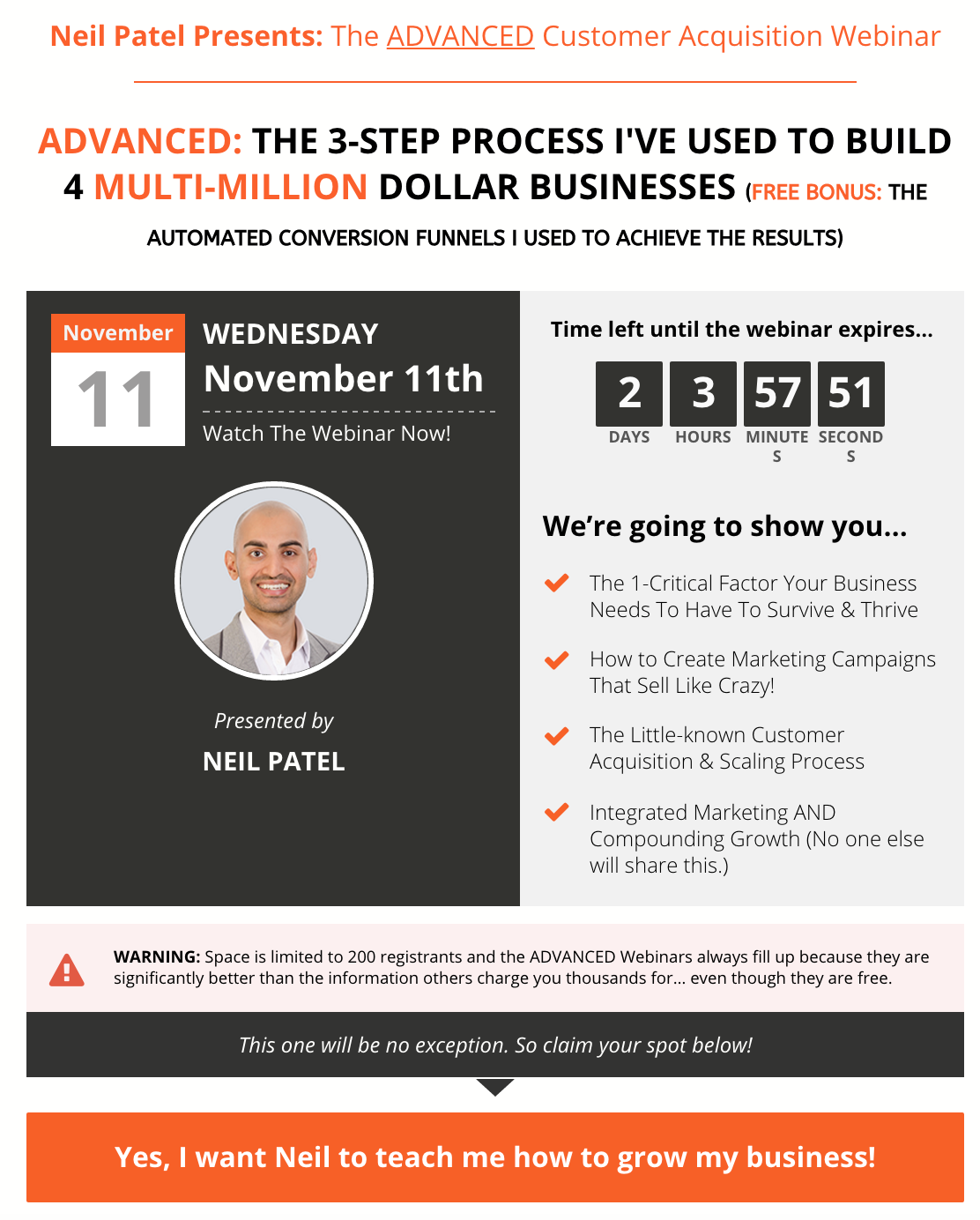
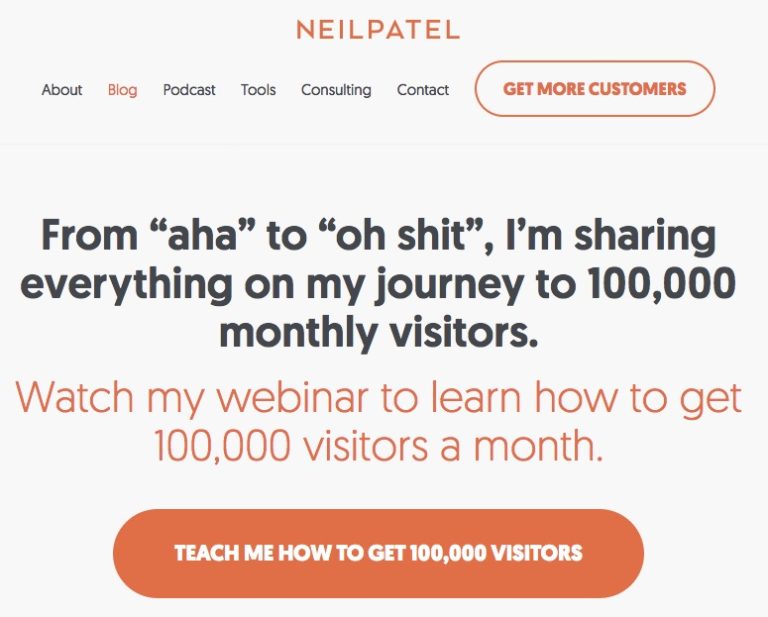
5. CREATIVE EXIT-POPUPs
Don’t let them leave empty-handed
Exit popups are messages triggered by a visitor’s mouse that shows he or she is about to abandon your website. These popups are opportunities for marketers to stop the visitors from leaving the site empty-handed.
In exchange for their email data, marketers can offer products (an eBook, whitepaper, coupon, newsletter, blog subscription, free trial) or discounts. Based on the latest numbers, exit popups can increase conversions by 5-10% when deployed correctly (source: ventureharbour.com).
To stop visitors in their tracks, marketers need to flex their copywriting muscles and come up with a text that draws visitor’s attention.
Here are 3 tips on how to write your exit popup text:
- Be Concise: no one has the time or patience to read entire paragraphs of text so keep it short and sweet;
- Be Funny or entertaining: if it aligns with your brand’s voice, try to find something funny or entertaining to tell to your visitor about to leave your site;
- What’s in it for me? Always show the visitor the value of your offer and how he/she can benefit from it.
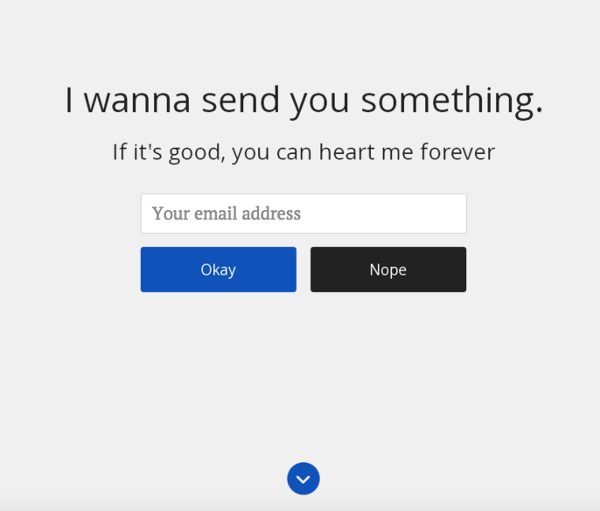
image source: impactbnd.com
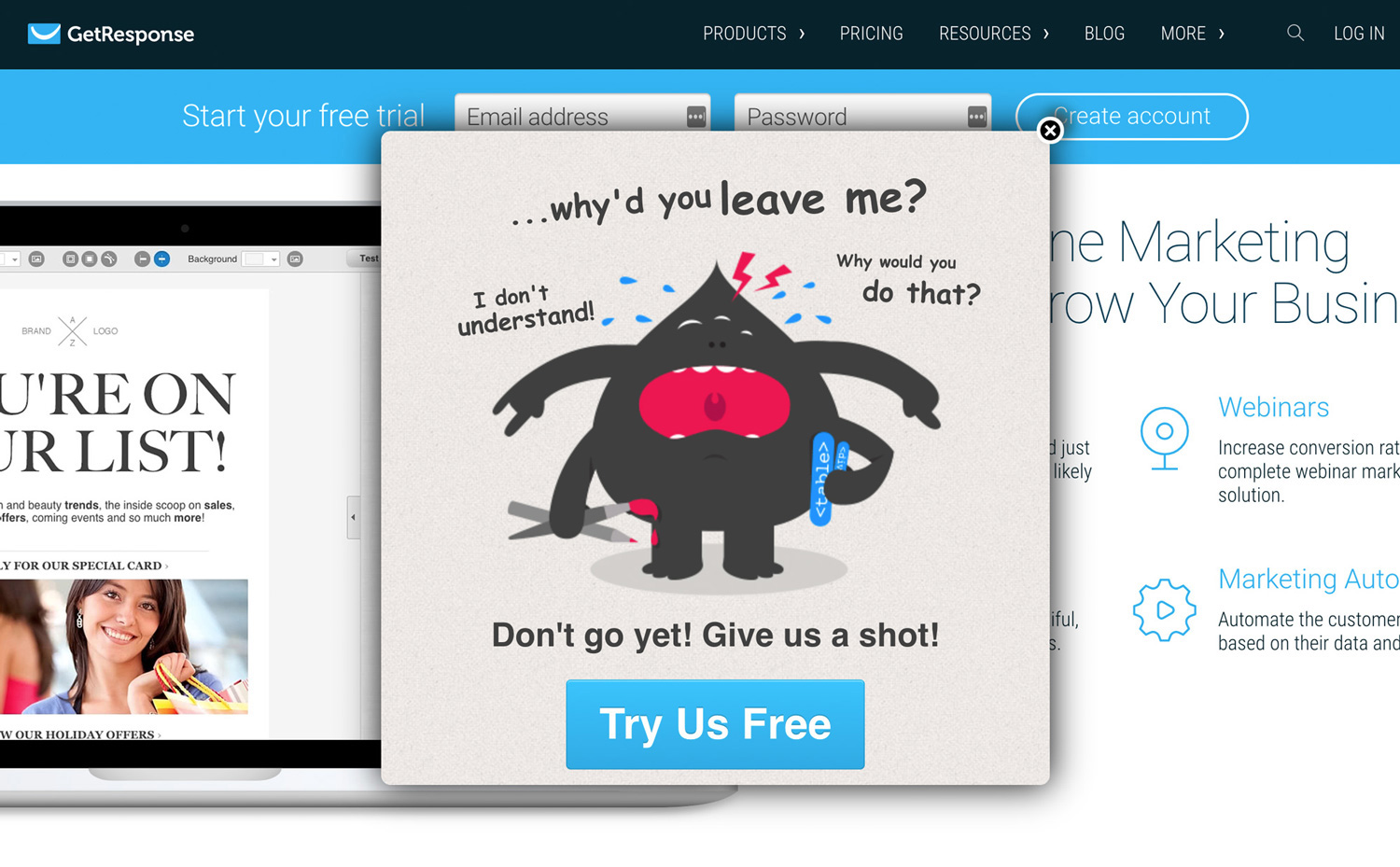 image source: unbounce.com
image source: unbounce.com
BONUS
Remember the bonus mentioned in the first paragraph?
Here it is!
6. LEAD GENERATION TOOLS
See which companies are visiting your website
Are you using lead generation tools?
If you’re not, it’s time you did.
If you are, congratulations!
There are many lead generation tools out there – as a marketer you have options galore. But when you are a B2B company, you need a lead generation tool that will show you which companies are visiting your website. We give you 3 examples of such lead generation tools in our article:
See which companies visit your website.
Let’s say you made your choice and picked the appropriate tool for your company. This tool is providing you with all the info on the companies visiting your website.
What do you do next? How do you turn them into customers?
Here are 3 tips:
- Send them an email that includes resources based on the pages they visited;
- Trigger a live chat conversation to engage them immediately while they’re still on your website;
- Connect with their management on LinkedIn and start the conversation.
Wrapping up
Here are 6 smart ways to turn website visitors into customers:
- Use augmented reality experiences to make a great impression;
- Start talking to them using chatbots;
- Encourage them to take the next step in your marketing funnel by using smart CTAs with great contextual copy;
- Show them how they can benefit by using your product or service and also what they stand to lose – people hate to lose!;
- Use exit popups – Don’t let them leave your website empty-handed!;
- Be informed on who’s visiting your house by using lead-generation tools.
Is car sharing the next version of Uber?
The carsharing or car-sharing system is a model of car rental where people rent cars for short periods of time, often by the hour. They are attractive to customers who make only occasional use of a vehicle, as well as others who would like occasional access to a vehicle of a different type than they use day-to-day.
According to Wikipedia, carsharing services are available in over 1,000 cities in several countries. As of December 2012, there were an estimated 1.7 million car-sharing members in 27 countries, including so-called peer-to-peer services, according to the Transportation Sustainability Research Center at U.C. Berkeley. Of these, 800,000 were car-sharing members in the United States.
As of July 2017, car2go is the largest carsharing company in the world with 2,500,000 registered members and a fleet of nearly 14,000 vehicles in 26 locations in North America, Europe and Asia, followed by Zipcar with 767,000 members and 11,000 vehicles. According to Navigant Consulting, global carsharing services revenue will grow to US 6.2 billion by 2020, with over 12 million members worldwide. The main factors driving the growth of carsharing are the rising levels of congestion faced by city dwellers; shifting generational mindsets about car ownership; the increasing costs of personal vehicle ownership; and a convergence of business models. Carsharing contributes to sustainable transport because it is a less car intensive means of urban transport, and according to The Economist, carsharing can reduce car ownership at an estimated rate of one rental car replacing 15 owned vehicles. More about the concept here.
In February, the car-sharing service Zipcar signed a deal to provide vehicles to Uber, possibly portending additional future cooperation in the field of mobility services. Zipcar parent Avis Budget Group said that it would supply Uber drivers with the opportunity to ferry passengers around in Zipcar branded sedans. Although at the beginning the deal is limited to 20 sedans in Boston, it opens the door for similar collaboration in other cities.
Zipcar provides rent-by-the-hour vehicles to motorists, particularly in urban areas, as an alternative to car ownership. Now, Uber drivers will be allowed to access the fleet of vehicles in Boston to serve their customers at hourly rental rates.
“As the automotive landscape evolves, technology is playing an ever-increasing role in transportation services, and we are well-positioned to meet new and evolving customer needs and demands, as evidenced by this new partnership,” said Andrew Kupiec, a vice president for Avis Budget. “Our quality, well-maintained vehicles, coupled with Zipcar’s technology, will give Uber’s driver partners wheels when they want them.”
This move marked one of the latest in a series of Uber partnerships with car providers, including rental car firms Enterprise and Hertz, and most recently a deal with German automaker Daimler to provide self-driving cars in the future.
Moreover, last year, Uber started a partnership with GM’s Maven, representing a 90 day pilot in San Francisco that allowed the Uber drivers to lease a Chevrolet Cruze, Malibu or Trax for $179 per week (plus fees) with no mileage limit, and included insurance. “This partnership with Maven combines our vast ridesharing network with GM’s extensive fleet vehicles and gives people without access to a car the ability to easily make money driving on the Uber platform,” said back then Rachel Holt, regional general manager Uber, for engaged.com.
Following that, in April, Uber made another important step, by launching Uber Central, similar to the consumer version of Uber, except multiple cars can be ordered at once. The service could be especially valuable for businesses that need to pick up several clients from different places at the same time. Uber Central is part of the Uber for Business platform, which Uber launched a few years ago to help businesses manage employees’ ground transportation needs.
What is even more interesting and different is that passengers don’t need an Uber account or even a smartphone. The business itself manages the rides and all related information from a single dashboard. According to ciodive.com, Uber said more than 8,000 companies participated in the pilot program. The new tool also includes reporting, billing and management features.
Uber’s interest in the sharing cars’ programs and affiliations doesn’t stop here. Only four days ago it was announced that, following the 2016’s 90 days trial with GM’s Maven, the service is available now also in Boston, Phoenix, and Washington, DC, while Baltimore and Detroit are said to be following soon.
“The program is aimed at drivers for rideshare apps like Uber and Lyft, and delivery apps like Postmates, GrubHub, and InstaCart. Someone who’s interested in driving for any of these on-demand services, but doesn’t own a vehicle, can rent a Chevy Bolt through Maven Gig for $229-a-week. The weekly price includes insurance, maintenance, and electric vehicle charging. Maven first launched its gig worker product last May in San Diego and San Francisco. Since then, Maven says its customers have logged 170 million miles driving for various on-demand apps,” wrote The Verge.
More on the subject you can read here, while if you are interested in 8 ride and car sharing alternatives to Uber and Lyft, you can read here.
Personalization online shouldn’t be too personal
We don’t like to be looked at in groups anymore. We hate the idea of being seen as one and the same as others around us. We want to brands to find a way to address us and our desires and issues with a personalized message, with an as clear as possible idea of whom we really are, each one of us. It’s a reality that more and more quantitative and qualitative researches show. For example, according to eMarketer, 80% of users find emails with personally recommended products helpful – but can be turned off by display ads that follow them around the internet as they read the news or check Facebook.
“Users like it when they feel like you’re helping them, not when you know where they live or publicise your purchases.Essentially, it’s important to find that sweet spot where personalisation doesn’t feel too personal. This personalisation works because it adds value to their experience. It helps them find what they want. It’s streamlined and doesn’t follow them around as the browse elsewhere. It’s personal, but the user itself controls the action. If that email converts, it’s because the user themselves opened it and decided they wanted to buy. It’s a reminder as opposed to a salesman following them around a store, asking “do you want this now? How about now?”,” said Gurmeet Lamba, chief operating officer at Sentient Technologies, for Campaign UK.
According to Econsultancy’s Quarterly Digital Intelligence Briefing: 2016 Digital Trends, the priorities that sit atop marketers’ lists are tied together by their focus on the individual: personalization (31%), content optimization (29%) and social media engagement (25%) are overlapping capabilities with the customer at the center. Moreover, nearly half (46%) of respondents rank the process of creating a cross-team approach with the customer at the heart of all initiatives as 4 or 5 on the difficulty scale.
In terms of marketing, personalization is when content is tailor-made with an audience segment or individual user’s characteristics or preferences in mind. This is typically based on previously collected or readily available data, such as website browsing behavior and interests on social media.
By doing so, marketers have a better chance of meeting consumer needs more effectively and efficiently, as content will be written about particular subjects or with a certain tone of voice, published on appropriate platforms, and promoted through relevant channels. This also results in easier, faster and better interactions with online audiences, which can contribute to user satisfaction, strong relationships, and brand loyalty.
A study conducted by Yahoo finds that most consumers are not only aware of online personalization, with 78% of those surveyed expressing a desire for some type of personalized content. And, according to Piers North, strategy director at Yahoo UK, quoted by The Guardian, the greatest opportunity for marketers today lies in managing personalization on mobile devices. He admits, however, that this is not easy and he points out that access to data is the key.
Therefore, personalization should be done with a lot of attention in order to be relevant and bring true value to the table. Despite all the opportunities that might occur in the online business today, for increased personalization, it’s important not to personalize for personalization’s sake – nor to become fixated on the latest tools or techniques.

In fact, Michael Smith, marketing leader for mobile and social business at IBM, quoted by Lucy Fisher for Marketing Week, warns it is easy to chase after personalization strategies “just because you can”. He says: “Customers want engagement with some brands, but not others. Whatever we do, it has to be with the customer in mind”.
We leave you here , with a psychological explication about why people love and crave for customized experiences.
12 tips on making the customers buy more in online
The e-commerce industry is probably one of the most competitive at this moment, globally. Therefore, having a successful online shop is not an easy task at all, let alone always growing your business and your customers’ base. There are, although, some steps that, if followed, can really help you achieve your goal.
- Context MattersYour call to action has to fit in with the rest of the copy you have on the page. In this case, put a shopping-cart-related call to action on a page that talks up the product you’ve created or in an article talking about how your product solves a particular problem. It would not go well in an opinion piece about news within your niche.
- Keep it Simple
Your consumer need to find the right information fast. Don’t overcrowd the message by having a heavy environment or many information popping out. It’s important to make the consumer journey as fast and easy as possible. Nothing forced, just flowing. Guide him without letting him feel he is guided. The body of your copy is the place to talk up your products or services. The call to action is what convinces consumers to start shopping.
- Product reviews
Sometimes the best advocate for your online shop and product are your customers. Your product descriptions – something we’ll cover late – can only do so much to convince folks to part with their money. Allowing your customers to review products they’ve bought lets them express how they felt about the overall experience and the product itself. Plus it’s the perfect way to get your products validated by a third party. According to Reevoo, quoted by Paymill.com, “reviews produce an average 18% increase in sales, and having 50 or more reviews on a product can increase its conversion by 4.6%”, while MarketingSherpa considers that 58% of consumers prefer sites that offer reviews.
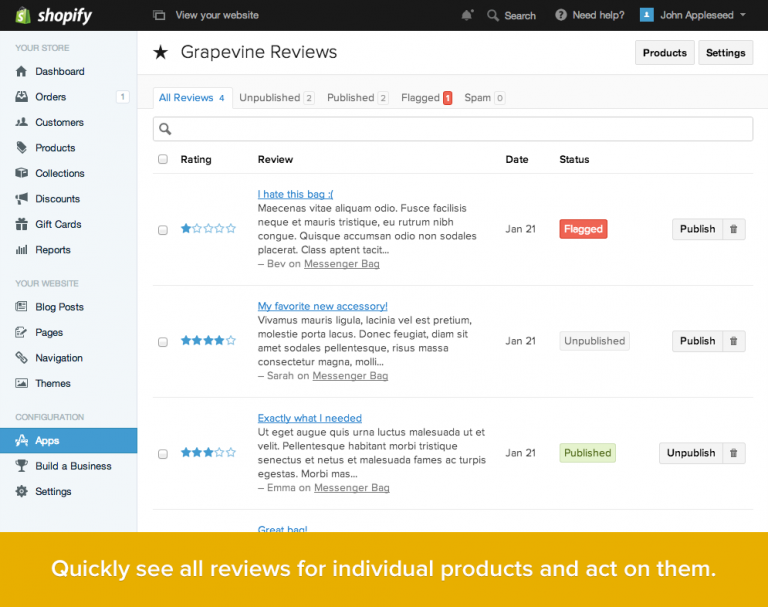
- Placement Matters
Most of the time, a call to action works best when placed at the end of your copy or content. If your particular business makes use of the long-form sales page, putting the call to action higher up is a good idea. You can highlight the benefits of your products and encourage people to buy.
- Make sure you use quality images
Since the technology has evolved so far and one can take a great quality picture, at a high resolution, even with the smartphone there are no more excuses for not using the best pictures possible for your products. You can not only use images to highlight your product’s qualities, but also show it in use to help visitors visualize how the product can be used everyday.
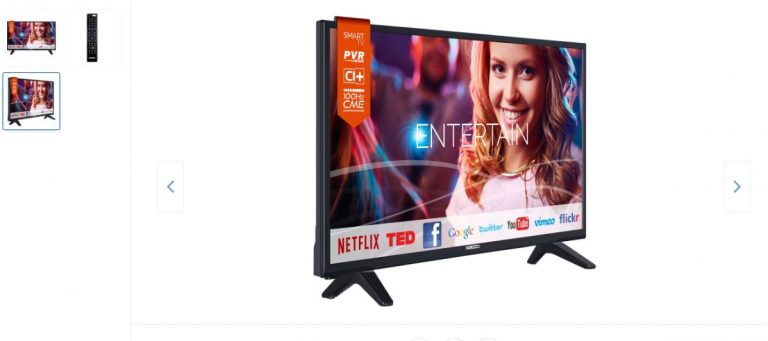
- Great product descriptions
Making it easy for the customers to find the right information and teaching them about the product they are interested in. The writing should be focused on you target and its needs, therefore the tone of voice should be adapted to that. It’s important to focus on the product’s benefits and to keep the language simple, avoiding as much as possible the jargon and write short sentences to help the readability.
- Build Excitement
You need to build up the product or line of products in customers’ minds before asking them to buy. This way, there won’t be any doubt about if they want to take the action you’re calling on them to take. Talk about or show how beneficial what you’re selling can be in the buyer’s life.
- Be Active, Not Passive
“It would be nice if you bought my stuff” is not the same as “Click here to start shopping.” Passive implies that you aren’t sure if you want them to do the thing you’re asking them to do. Active voice removes all doubt about your expectations, shows confidence in your products and brands, which it will bring confidence for the customers as well.
9. Try and have pages as clickable as possible
It helps if you make your call to action an actual clickable link — preferably to your shopping cart (which can say something like “Cart empty! Start shopping here”). This saves the viewer the time of searching for the thing that helps them do what you want them to do. As said earlier, making things easier and comfortable for the shopper only helps your business and your sales.
- Show related products that would look great next to the product they already have in the cart or that would fit perfectly. For example for a photo camera a memory card or different lenses. People tend to buy more this way. It’s an opportunity to increase revenue because it shows items visitors may not have otherwise been looking for and it takes them to pages they may haven’t been interested in entering.
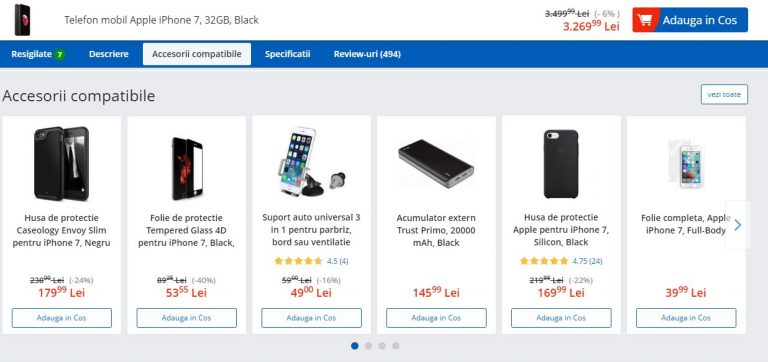
- Easy and safe payment
One of the biggest concerns that people address when it comes to online shopping is the safety of their payment. Make sure you have a trustful provider and that you make the process as easy as possible. Offer them different payment methods, don’t force them to sign up for different offers or newsletters, don’t ask them a bunch of unnecessary information, make sure the checkout page matches the rest of the store. Those would be just some easy, but really important pieces of advice.
- Test, Change, Test Again
Having an online store means constant work of improvement. Even if you have constant growth and awards won, there is always something you can improve. Therefore, test and keep on always testing your website. After all, the final goal is to always keep the costumer happy and wanting to come back and bring more friends along.


